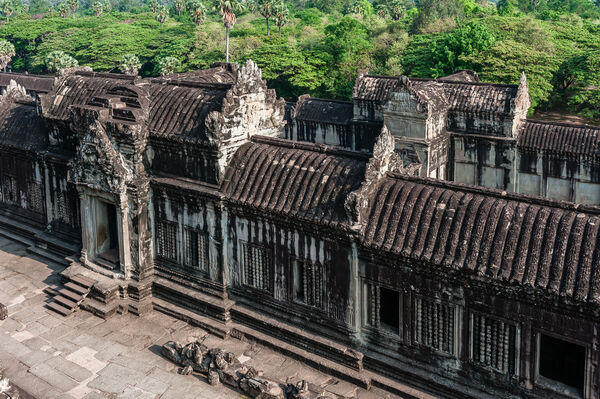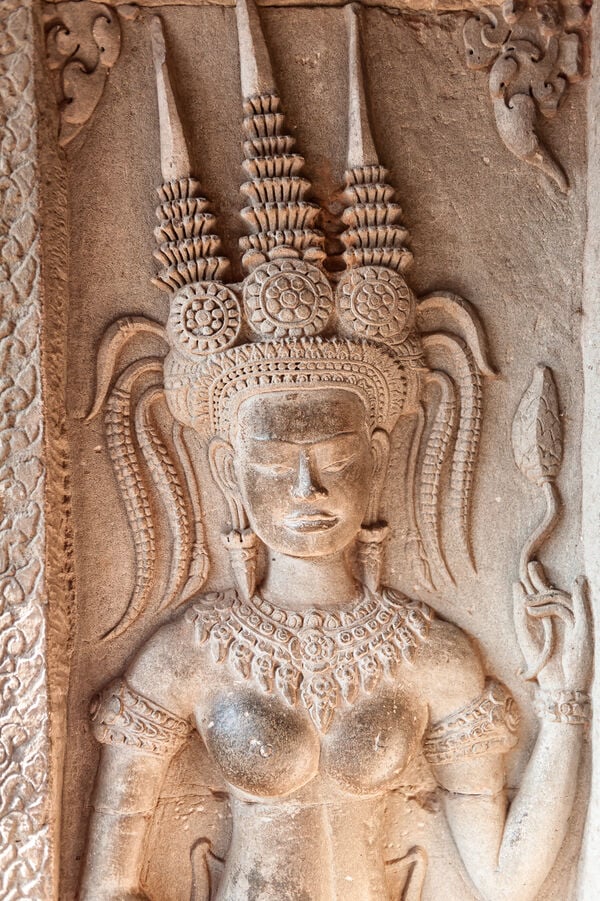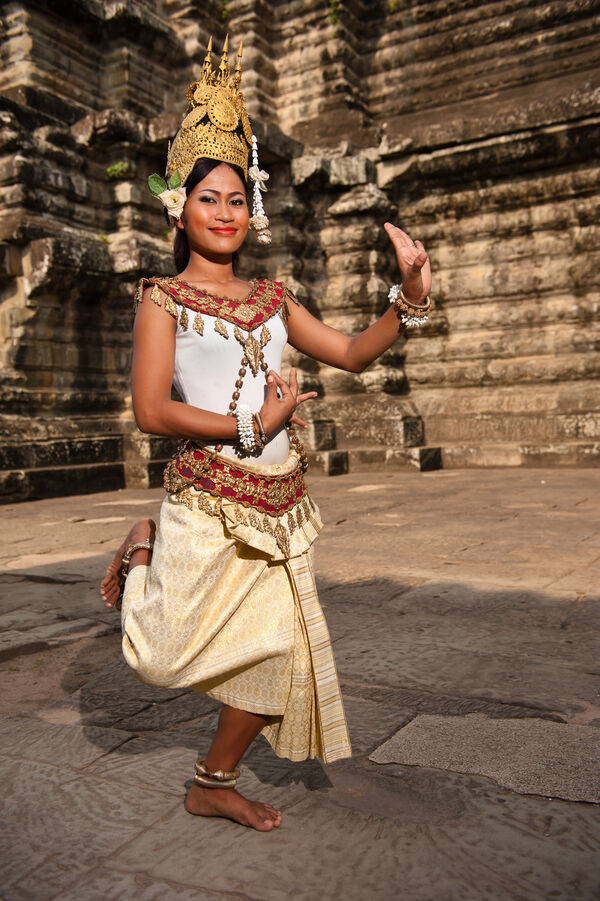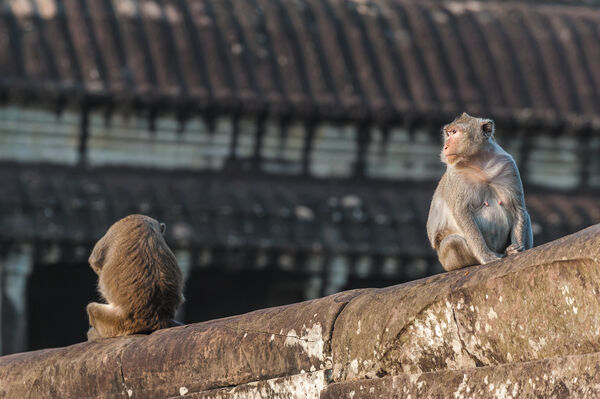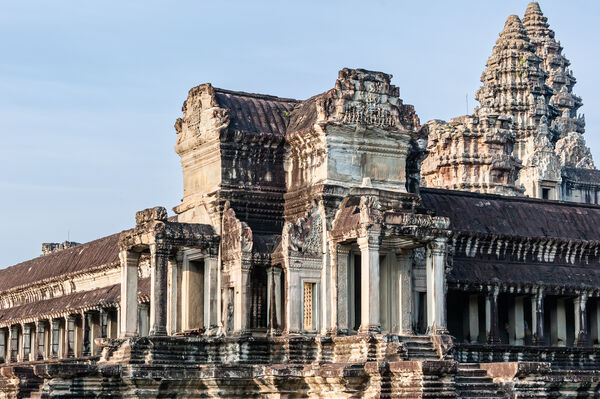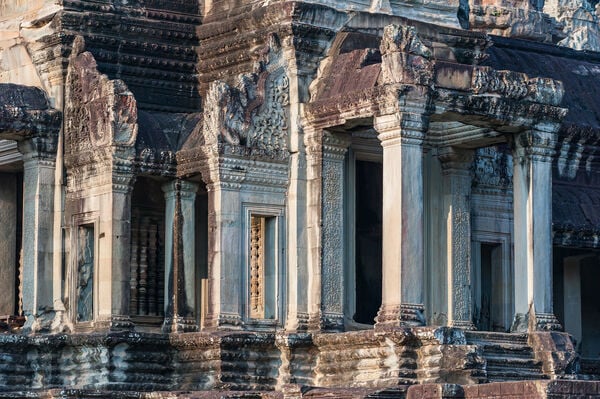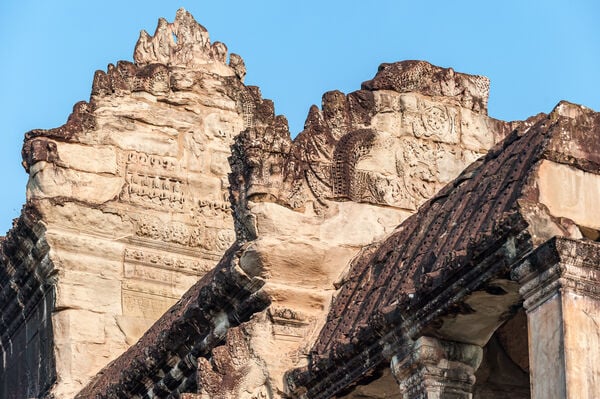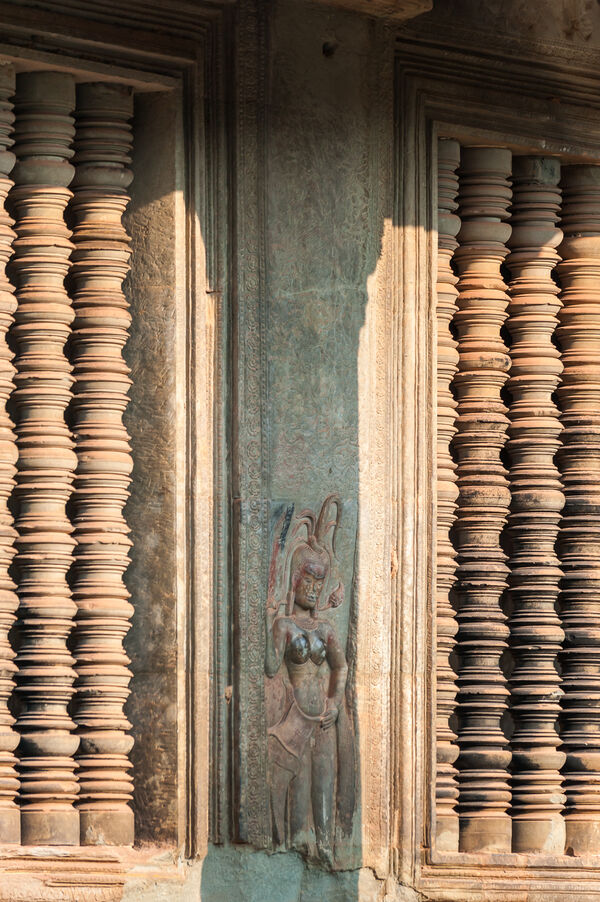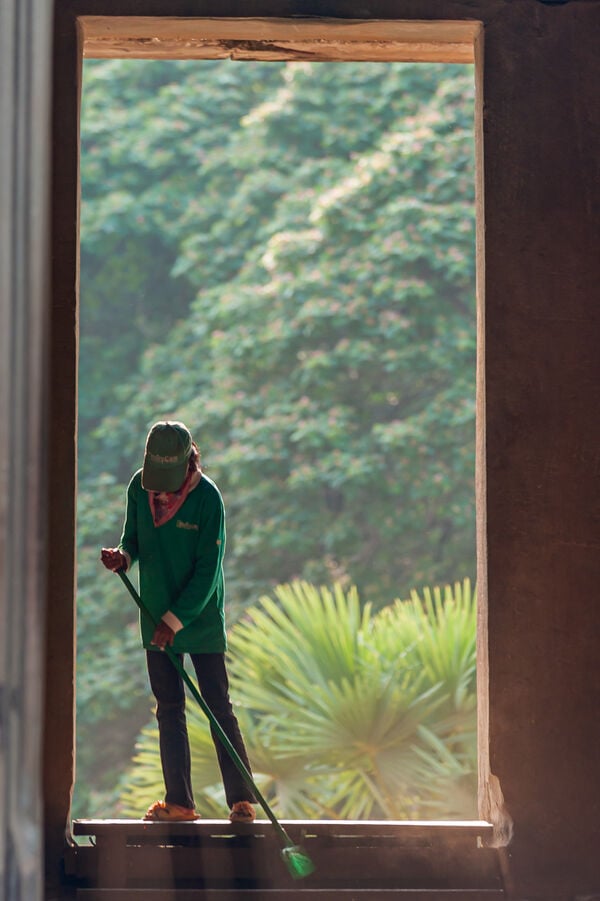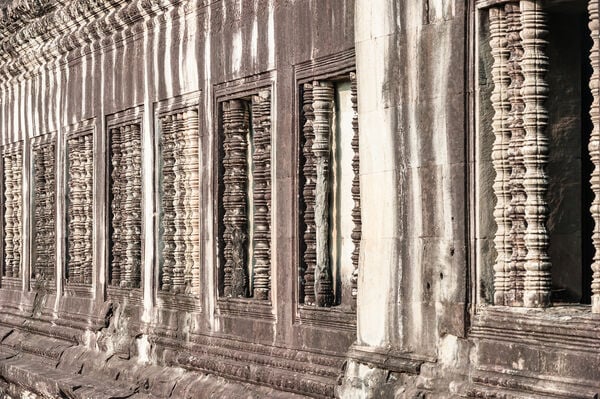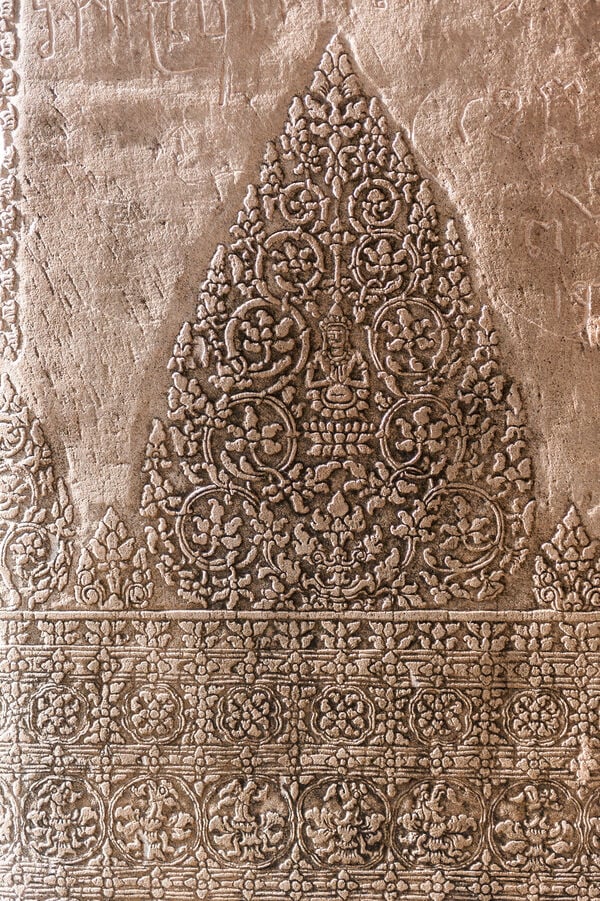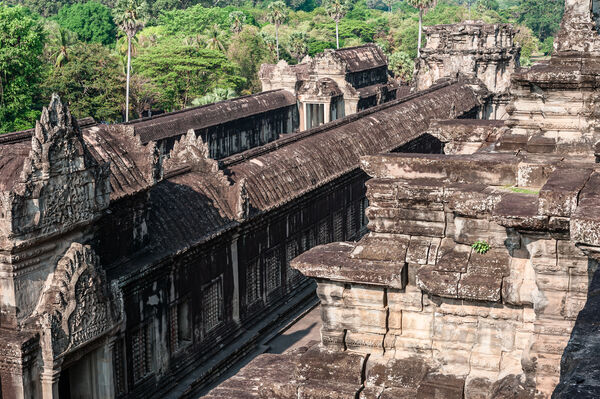 Angkor Wat (Interior)
Angkor Wat (Interior)
13 images 1 contributors Shoot with care
Sue Wolfe
Shoot with care
If you want to climb up to the sacred temple and top terraces you must have your shoulders and knees covered.
About this spot
The Khmer Empire ruled a large portion of Southeast Asia between the 9th – 15th centuries. Angkor Wat was constructed as a Hindu temple dedicated to Vishnu the first half of the 12th century. King Suryavarman II built it as his state temple and mausoleum. It was gradually transformed into a Buddhist temple a century later.
Angkor is oriented to the west and was built to be a miniature universe. The central tower representing Mount Meru, the five towers corresponding to the peaks of Meru, the outer wall symbolizing the mountains and the surrounding moat the oceans beyond. The 5 lotus-like towers rise 65 meters and numerous bas reliefs and devatas adorn the walls. The complex is a series of elevated towers, covered galleries, chambers, porches and courtyards on different levels linked by stairways. The temple’s main tower aligns with the morning sun of the spring equinox. Some scholars estimate it took 300,000 workers to build Angkor Wat.
In 1177, Angkor was sacked by the Chams. The empire was later restored and a new capital and state temple were built (Angkor Thom and Bayon). After the capital was moved to Phnom Penh in 1432, the temple was cared for by Buddhist monks.
In the 16th century only Angkor Wat was still in use—the others had been swallowed by the jungle. The temple was rediscovered by explorer Henri Mouhot in 1860. He wrote, “it was grander than anything left to us by Greece or Rome.”
At one time the temple was surrounded by a city of nearly one million people and the entire complex spread across more than 400 acres. While the temple and outer walls were built of sandstone, the rest of the structures were built from wood or other less durable materials and did not survive the encroachment of the forest, numerous earthquakes and civil war.
Angkor Wat became a UNESCO World Heritage site in 1992.
Angkor is oriented to the west and was built to be a miniature universe. The central tower representing Mount Meru, the five towers corresponding to the peaks of Meru, the outer wall symbolizing the mountains and the surrounding moat the oceans beyond. The 5 lotus-like towers rise 65 meters and numerous bas reliefs and devatas adorn the walls. The complex is a series of elevated towers, covered galleries, chambers, porches and courtyards on different levels linked by stairways. The temple’s main tower aligns with the morning sun of the spring equinox. Some scholars estimate it took 300,000 workers to build Angkor Wat.
In 1177, Angkor was sacked by the Chams. The empire was later restored and a new capital and state temple were built (Angkor Thom and Bayon). After the capital was moved to Phnom Penh in 1432, the temple was cared for by Buddhist monks.
In the 16th century only Angkor Wat was still in use—the others had been swallowed by the jungle. The temple was rediscovered by explorer Henri Mouhot in 1860. He wrote, “it was grander than anything left to us by Greece or Rome.”
At one time the temple was surrounded by a city of nearly one million people and the entire complex spread across more than 400 acres. While the temple and outer walls were built of sandstone, the rest of the structures were built from wood or other less durable materials and did not survive the encroachment of the forest, numerous earthquakes and civil war.
Angkor Wat became a UNESCO World Heritage site in 1992.
Join PhotoHound to learn how, where and when to capture amazing photos here
- Know the best times, seasons & shooting conditions
- Detailed directions - maps, co-ordinates and directions
- Know how to get there - where to park or how to reach there using public transport
- Browse inspirational photos and learn how they were taken - see the EXIF details
- Bookmark your favourite spots for future reference
- Know exactly when to shoot for beautiful photographs - sunrise, sunset, blue hour and astrophotography
- Detailed, 7-day weather forecast at this location
- Share your images with like-minded travel photographers
